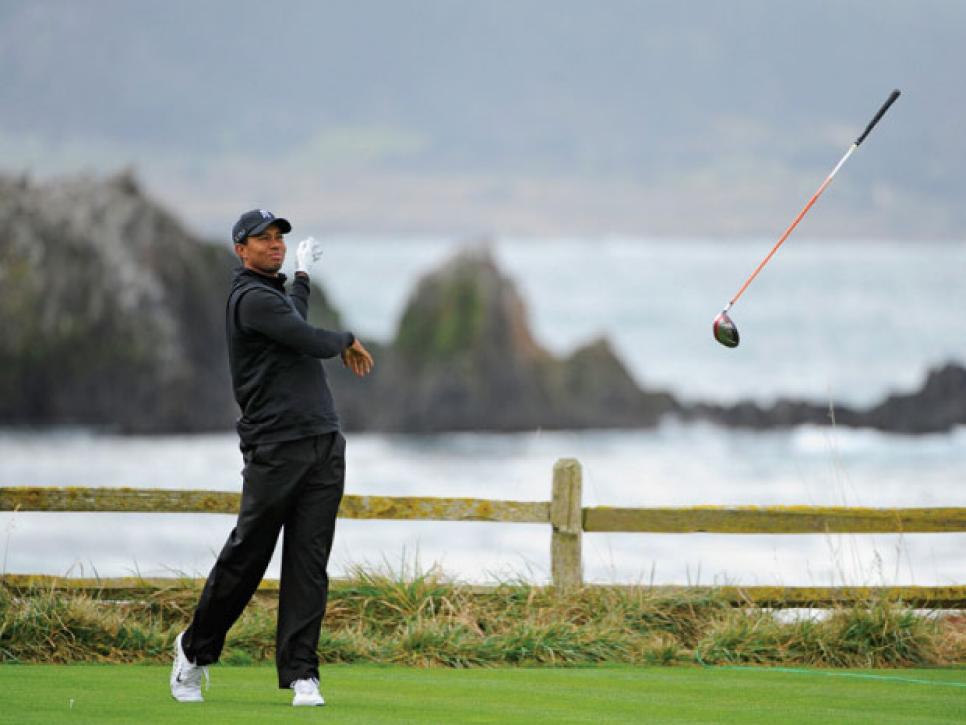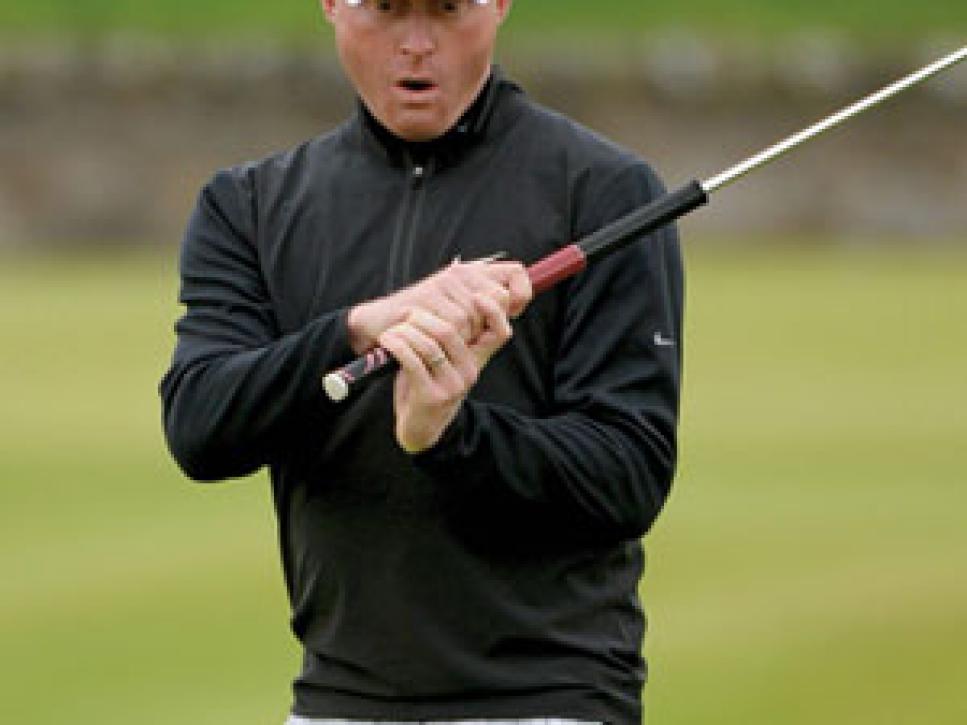Before You Reload

First off, tough break, bud. Who knew that drive would carom off an irrigation-control box and roll into the ravine. You should probably hit a provisional. But before you do, take stock of the following provisions:
1. Know when you can play a provisional:
If you think your ball might be lost outside a water hazard or out-of-bounds, you can put a backup ball into play.
2. Announce your intention:
The first thing you should do is say something like: "I'm gonna hit a provisional." Then go ahead and play the shot. Make sure your fellow-competitors hear you say this. That's important. Also, don't let your caddie or partner start searching for your original until after you hit the provisional. Finally, remember that you're allowed to go forward some 50 yards without losing your option to return to the spot where you last played, and hit a provisional.
3. Keep hitting your provisional ball until you reach the area where your original ball might be lost:
There's no limit to the number of strokes you can take with a provisional ball. If your original is found, disregard the strokes and any penalties you might've incurred with the provisional. Continue with your original.
4. You have five minutes to find the original:
The clock starts the minute you or your partner (or either of your caddies) begins to search. If you don't find it, the provisional is in play, and you incur the stroke-and-distance penalty for losing the original ball.
5. You must abandon your provisional ball if your original isn't lost or out-of-bounds, or you determine that it's in a water hazard:
Conversely, anytime you hit a great provisional shot, you might not want to find your original ball. If someone finds it before you play a shot with the provisional, the first ball is the one you must play.
6. If you're 99.9 percent sure your ball went into a water hazard, don't hit a provisional:
Once you re-hit from the same spot, that new ball is in play (with a stroke added to your score). You've forfeited the right to drop up by the hazard.
7. If you think your provisional might also be lost, hit another:
This process continues until you have a ball in play. Just keep track of which ball is which!

IT HAPPENED ON TOUR
Player: Simon Dyson
Event: BMW Masters
Rule in question: 16-1a (Touching the line of putt)
Situation: On the eighth green, Dyson marked his ball and then with it still in his hand, tapped down a spike mark on his putting line. He later replaced his ball, putted out, and finished the second round in a tie for second place, at four under par.
Verdict: You're allowed to touch the line of a putt to remove loose impediments or obstructions, repair ball marks, or lift/replace the ball or marker. But it's a two-stroke penalty if you touch the line to tap down a spike mark, as Dyson did. A TV viewer spotted the infraction and notified tournament officials. Dyson was disqualified for signing an incorrect scorecard and fined by the European Tour for a "serious breach" of the rules. A disciplinary panel concluded Dyson intentionally tapped down the spike mark to improve his chance of holing the putt. Dyson, who could face a ban from the tour if he commits another rules violation, says he has never deliberately broken a rule.
—Keely Levins
POP QUIZ
Q: You're playing four-ball stroke play, and your partner is found to have 15 clubs in his bag after he tees off on the opening hole. The penalty is two strokes, but your fellow-competitors insist the penalty be applied to your score as well as your partner's score. Are they right?
A: Yes. When it comes to rules violations involving Rule 4 (clubs) or Rule 6-4 (caddie), any penalty is applied to both members of a side.